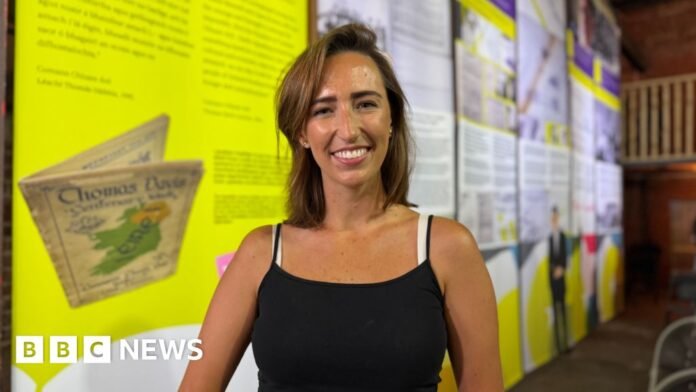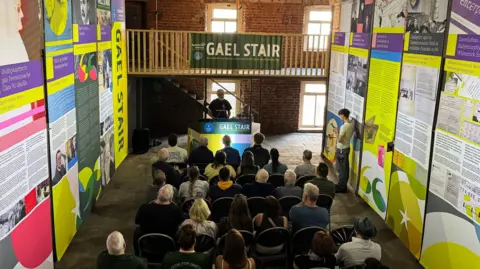 BBC
BBCLesser-known key figures and unsung heroes behind the decades-long preservation of the Irish language in west Belfast have been spotlighted in a new exhibition.
The old drying rooms in historic Conway Mill, off the Falls Road, hosts the A Life in Irish – A Life Without Poverty exhibition, which looks at a diverse range of people who promoted and preserved the language since the 1930s.
Among the people and groups highlighted are activist Clára Ní Ghiolla and trade unions, whose role in language preservation is considered less well known.
Former Sinn Féin president Gerry Adams was the keynote speaker at the exhibition’s opening on Thursday, and he highlighted the important role the Presbyterian Church played in keeping Irish alive.
“It’s not a Catholic thing. The Irish language belongs to every single person who lives there,” he said.
He went on to mention the connection between Culturlann McAdam Ó Fiaich, the language’s cultural centre in west Belfast which is based in an old Presbyterian Church, and is partly named after Robert McAdam, a Presbyterian who collected Irish phrases and commissioned the recording of Irish music.
“Douglas Hyde – the first president of the Gaelic League was a Protestant,” he added.
Part of the exhibition, which features long posters draping the drying rooms’ walls, features reproduction of artefacts, including letters, diaries and pictures, unearthed from the attics of Shaw’s Road in west Belfast – the first urban Gaeltacht on the island, which was founded in 1969.
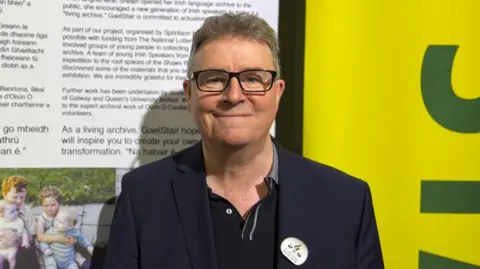
Seán Mistéil, the chair of Colaiste na Féirste and member of Spórtlann na hÉireann, the exhibition’s organising group, said the event was about socializing the archive and showing how far Irish language has come.
He said the idea that “the language in some way belongs to one person or one political belief or one religions background is just nonsense”.
“That’s the thing about the archive and the truth that exists within the archive – it challenges that from the get-go.
“The Irish language movement has always been pluralist in its ambition.”
Mr Mistéil was attending with his son Aodán and mother Kathleen, who was the co-founder of the Shaw’s Road urban gaeltacht – a living example of the recent history being spotlighted by the exhibition.
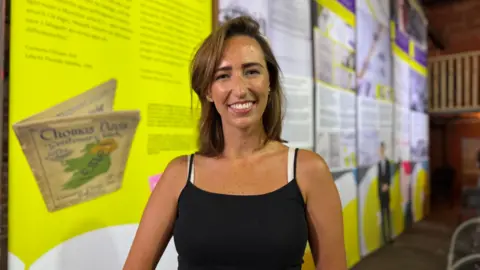
Róisín Nic Liam, a PhD student at Queen’s University who is studying the language reformation movement in Belfast, said it was “fantastic” to see history being brought to the public in an accessible way.
“It’s great to see the amount of commitment and the amount of activism throughout the years to the Irish language.
“I think the most important thing that we can learn from them is that the language cannot function in its own little silo or by itself.
“We need to make those connections with other people, other communities, I suppose, who are marginalized or disenfranchised.”
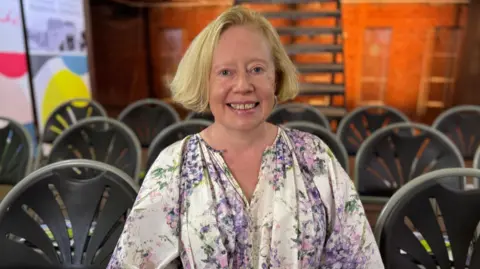
Among the other attendees in the packed room was Maggie Keane, who said she travels to west Belfast from County Kerry every year to take in events at Féile an Phobail.
“I go to a number of the events and I love the variety,” she said.



